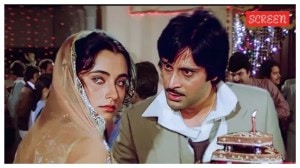Railways high-speed plan gets on track
The project envisages constructing railway corridors where passenger trains can move at speeds between 300-350 kmph.

Even as serious doubts are being raised in the Rail Bhavan corridors over the feasibility and commercial viability of the ambitious High-Speed Passenger Corridor Project, the Indian Railways is buoyed over the fact that not only have nine state Governments shown interest in it, they have even suggested as many as 16 routes, spread over 5,400 km, for constructing such corridors.
While Maharashtra, Karnataka, Tamil Nadu, Gujarat, Delhi, Haryana, Punjab, Andhra Pradesh and West Bengal are learnt to have formally expressed interest in the project, others like Uttar Pradesh, Rajasthan, Gujarat, Kerala, Bihar and Jharkhand too are testing the waters.
Some of the routes suggested by the states include Mumbai-Ahmedabad, Bangalore-Mysore, Chennai-Coimbatore, Delhi-Chandigarh-Amritsar, Hyderabad-Bangalore, Vijaywada-Vishakhapatnam and Howrah-Haldia.
What has the Railways Ministry excited is that all the states formally expressing interest have also accorded “in principle” approval for the pre-feasibility studies needed. From the beginning, the Railways was keen that state Governments share the cost of pre-feasibility studies on the project, which are expected to take a minimum of two years.
The project, announced by Railway Minister Lalu Prasad Yadav in this year’s Rail Budget, essentially envisages constructing railway corridors where passenger trains can move at speeds between 300-350 kmph. By constructing these corridors, the Railways hopes to win back clientele that has migrated to low-cost airlines in recent times.
Officials note that while a low-cost airline and a Rajdhani Express (which hit maximum speed of 100-110 kmph) charge almost Rs 4 per passenger km, a high-speed train option priced around this rate could be extremely viable. Railway officials say that some rough surveys done on the Mumbai-Ahmedabad and Delhi-Amritsar routes
indicate that a high-speed train would attract enough ridership.
Further, the Railways are keen to market the idea as an important instrument in the battle against carbon emissions. The Railways’s preliminary estimates suggest that a High Speed Rail consumes 0.933 litres of fuel per 100 km travelled, in comparison to the 4.04 litres consumed by an airplane and 5.69 litres consumed by an economy car. The estimates further indicate that if one were to commission a High Speed Passenger Corridor in 2007, it would result in taking 2,36,000 cars and 74,000 buses off the roads by the year 2012.
However, the exorbitant cost involved in setting up the infrastructure for the project has many worried in the ministry. Rough estimates prepared by Rail Bhavan mandarins suggest an expense of Rs 25,000 crore (excluding the cost of land) for every 500 km. The Railways is mooting raising Rs 11,000 crore of it from debt, another Rs 5,000 crore through equity, Rs 5,000 crore through commercial exploitation of land and the remaining Rs 4,000 crore by viability gap funding. The bottomline, say officials, is to have zero net cost to the Government.
Photos



- 01
- 02
- 03
- 04
- 05



























